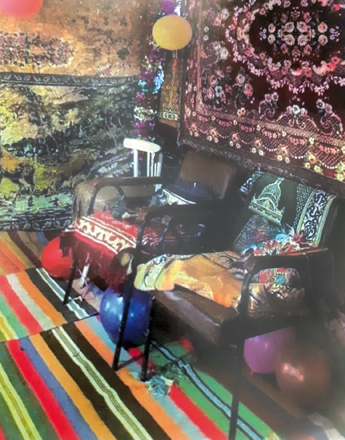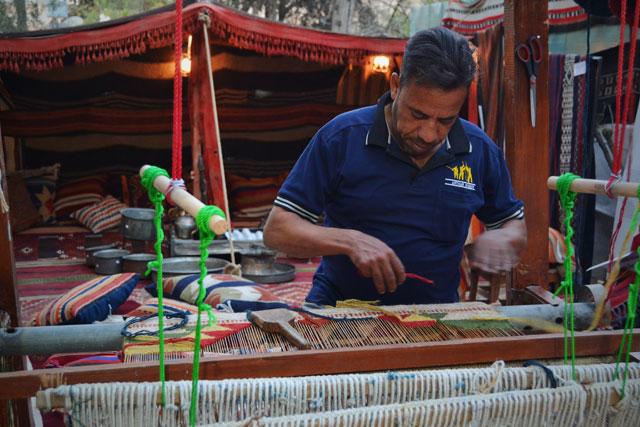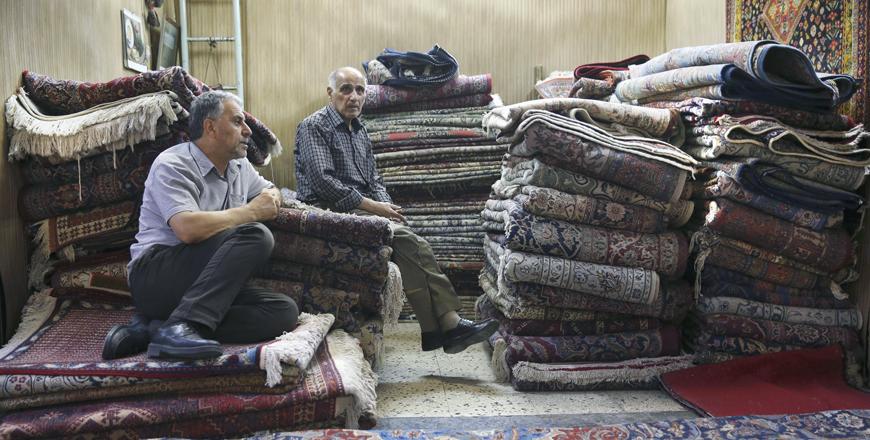You are here
Scholar weaves history of carpet making in Jordan
By Saeb Rawashdeh - Sep 11,2023 - Last updated at Sep 11,2023

A wedding lodge decorated with carpets (Photo courtesy of Catreena Hamarneh)
AMMAN — Regional migrations contributed to merging of different styles of handicrafts and carpets, noted Catreena Hamarneh from the German Protestant Institute of Archaeology.
Oriental carpets were used in Transjordan back in the past. Hamarneh cited British traveller Sir John Edward Gray Hill’s (1839–1914) observations, the first record found in 1887, who described the tent of a sheikh: “Others were placed according to their several ranks in the estimation of the tribes on carpets laid opposite to, and on each side of him… Ali Diab sent for some cushions from the women’s apartment to be put at our backs, beautiful Persian rugs having already been spread where we sat.”
“The early decades of the 20th century were marked by a political turmoil, and the region was divided between France and the UK,” Hamarneh said, adding that Syrian refugees settled in Salt, Karak and Amman, bringing carpet making and other crafts with them.
The earliest standing looms were operated in Salt on Al Hammam Street, where Syrian and local craftsmen dyed wool, and the looms were placed at the end of the street, Hamarneh noted, adding that shops selling ropes, upholstered furniture and tents operated there.
“Aritin, an Armenian, moved to Madaba in the 1920s, opening a weaving shop and many others became encouraged to start their workshops in downtown Madaba,” Hamarneh said, noting that some of them formed “a dynasty of weavers”.
Oriental carpets were considered a luxury items and they were hanged on the wall to decorate houses and public buildings, Hamarneh continued, adding that Amman later became the capital of the Emirate and the vision of Hashemites was to create a modern Arab capital that would attract other Arabs and foreigners alike.
“After the Palestine War in 1948, the Hashemites took over custodianship of holy sites in the West Bank and they renovated carpets at the Ibrahimi Mosque in Hebron,” Hamarneh said.
The 1960s was a period of industrialisation of Jordan and it included the carpet industry.
“ With the aid of the American Labor Mission, industrialised looms were distributed to secondary schools for boys in Karak and Tafileh, and girls schools in Amman and Irbid,” Hamarneh said, adding that new housing was booming and the demand for carpets increased.
Upper classes could afford Ajami carpets from abroad, Hamarneh said, noting that such carpets were a status symbol of rich and successful Jordanians.
“Persian carpets were hung on the walls because they were too expensive to be trodden on,” she said.
Carpets from Hijaz were also imported and they furnished local mosques, like the famous Abu Darwish Mosque on the top in Jabal Ashrafiya, Hamarneh said, adding that King Talal Street in downtown Amman was a hub for carpet weavers and dealers, where cushions, saddles, rugs and tents were displayed and sold.
Related Articles
AMMAN — Exploring the social and symbolic meaning of carpets, the new book “Woven Heritage” delves into the significant role that the
AMMAN — Audience get the chance to witness the traditional weaving techniques performed by different bedouin tribes at the “Woven — The art
TEHRAN — Iran's famed carpet weavers are busy at work anticipating a boost in exports as sanctions are set to be lifted in the months ahead.
















